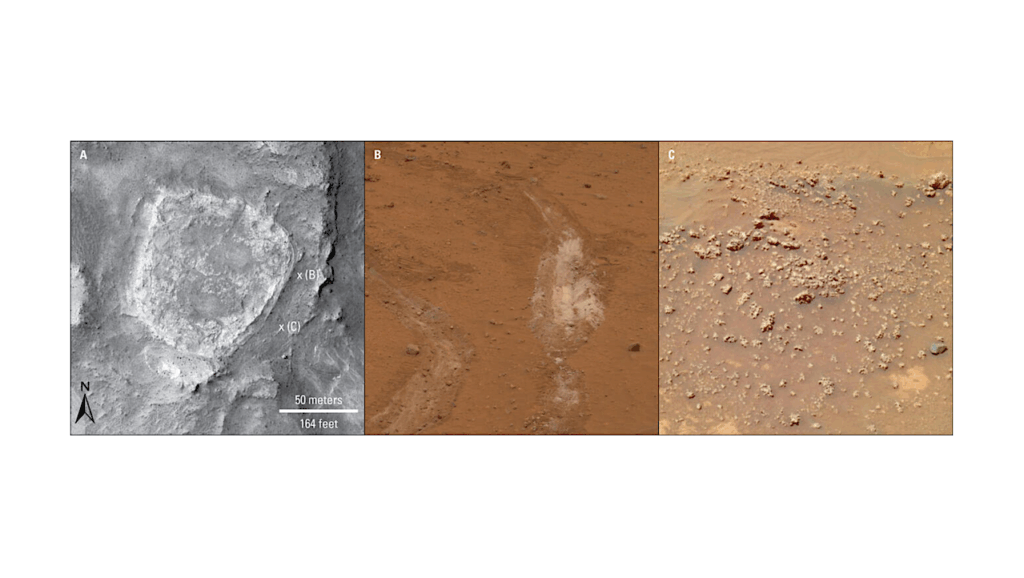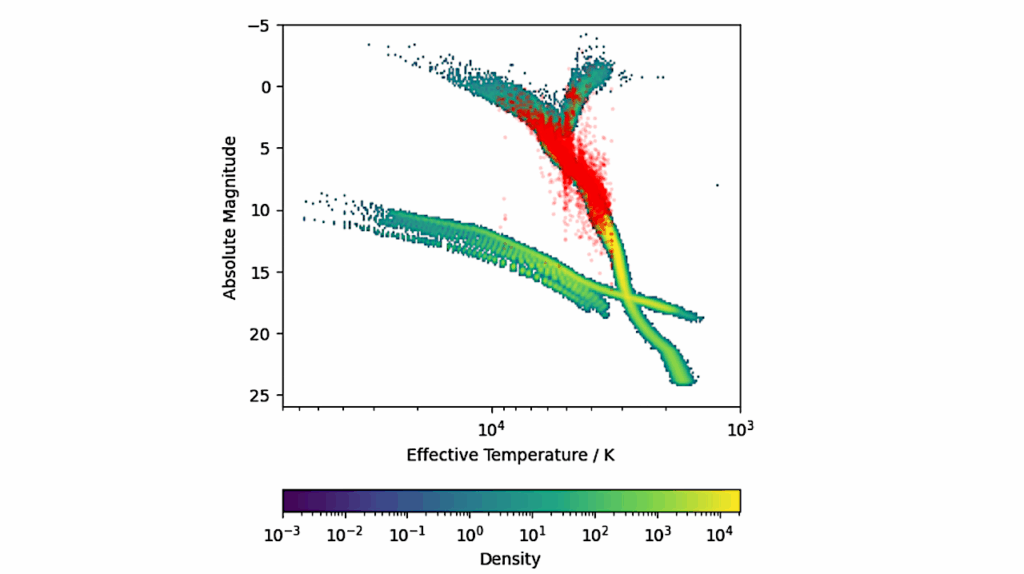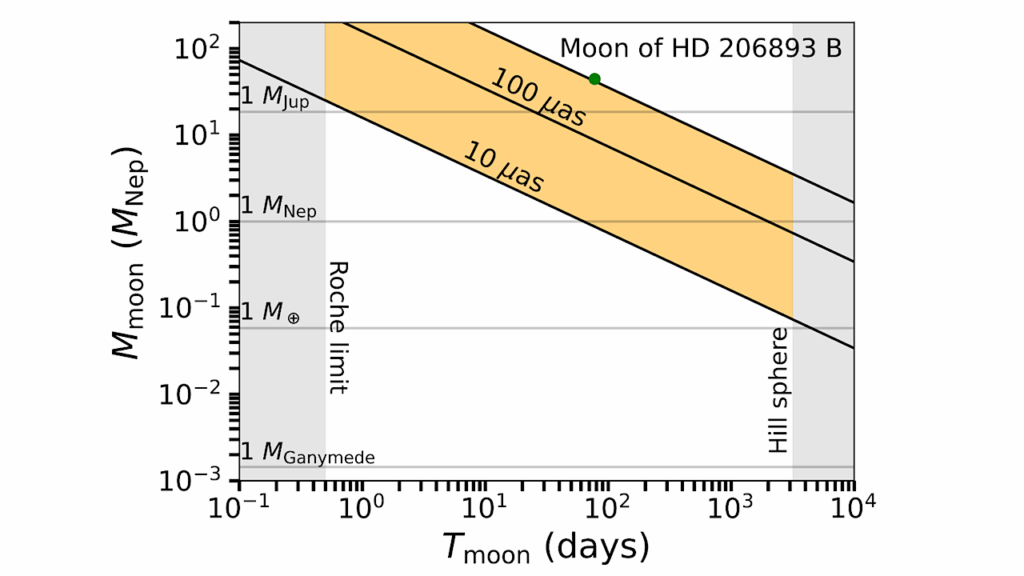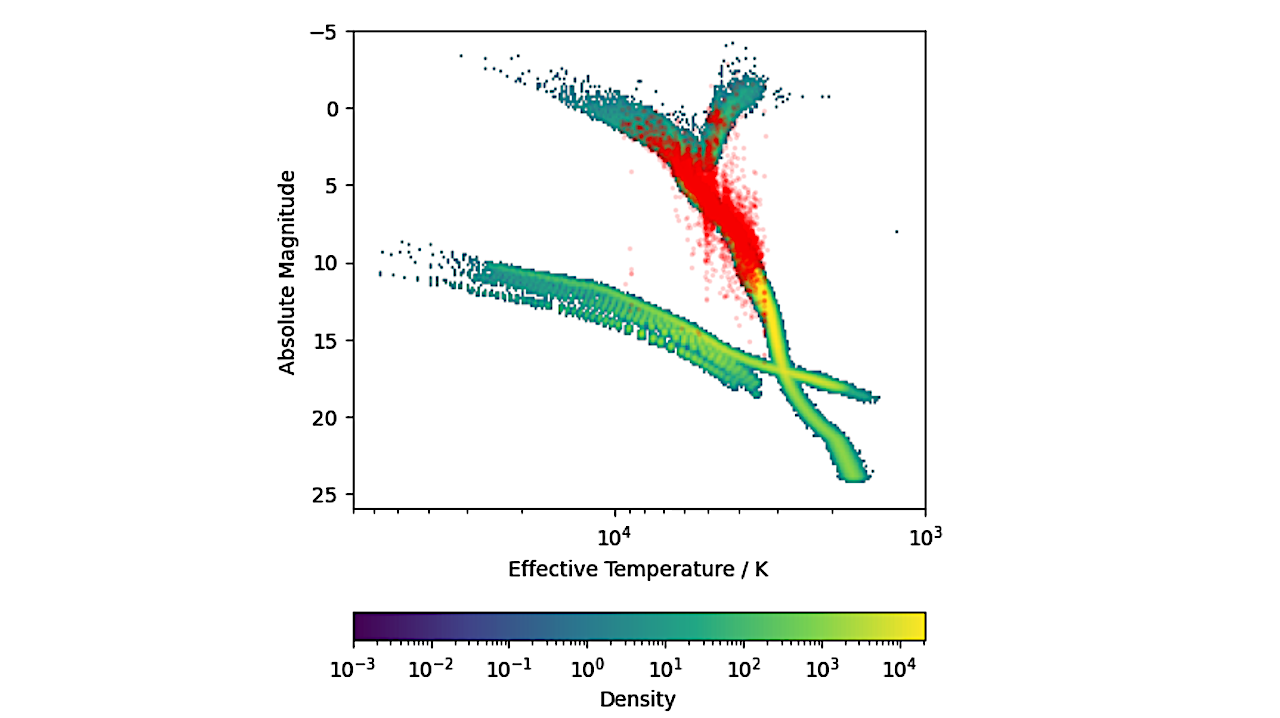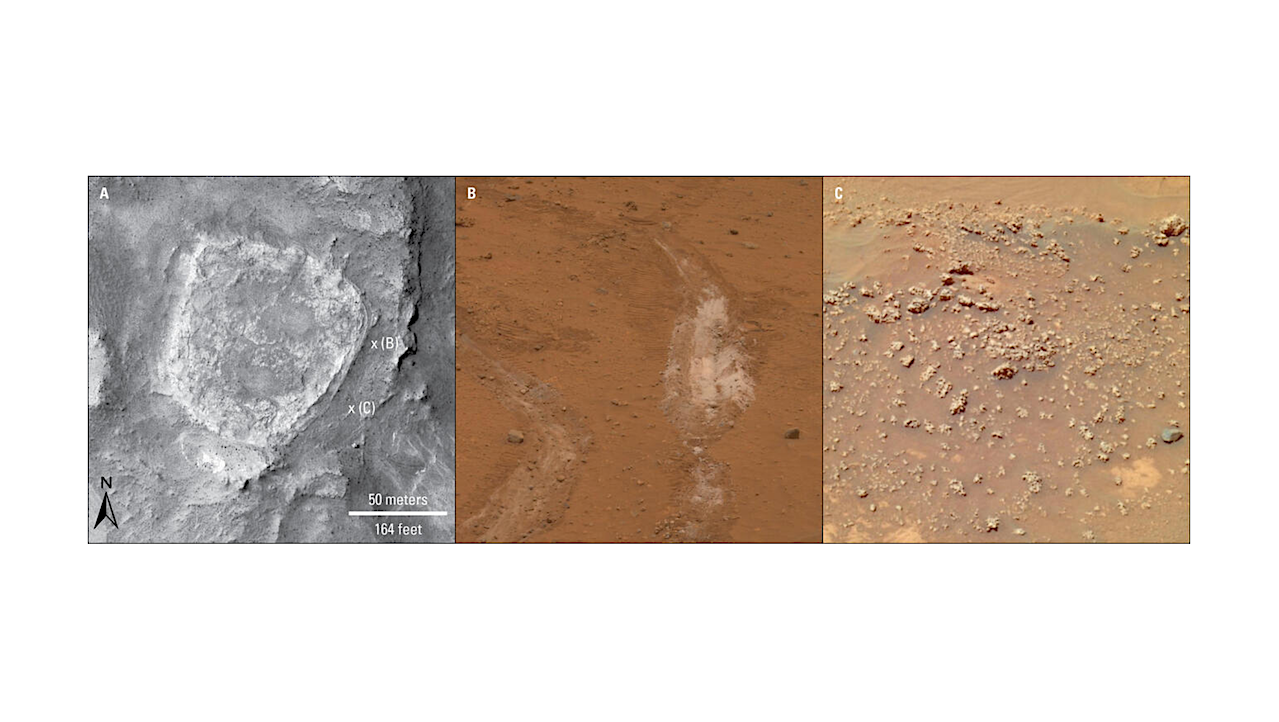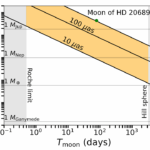Now Reading: Resonant Structures In Exozodiacal Clouds Created By Exo-Earths In The Habitable Zone Of Late-type Stars
-
01
Resonant Structures In Exozodiacal Clouds Created By Exo-Earths In The Habitable Zone Of Late-type Stars
Resonant Structures In Exozodiacal Clouds Created By Exo-Earths In The Habitable Zone Of Late-type Stars
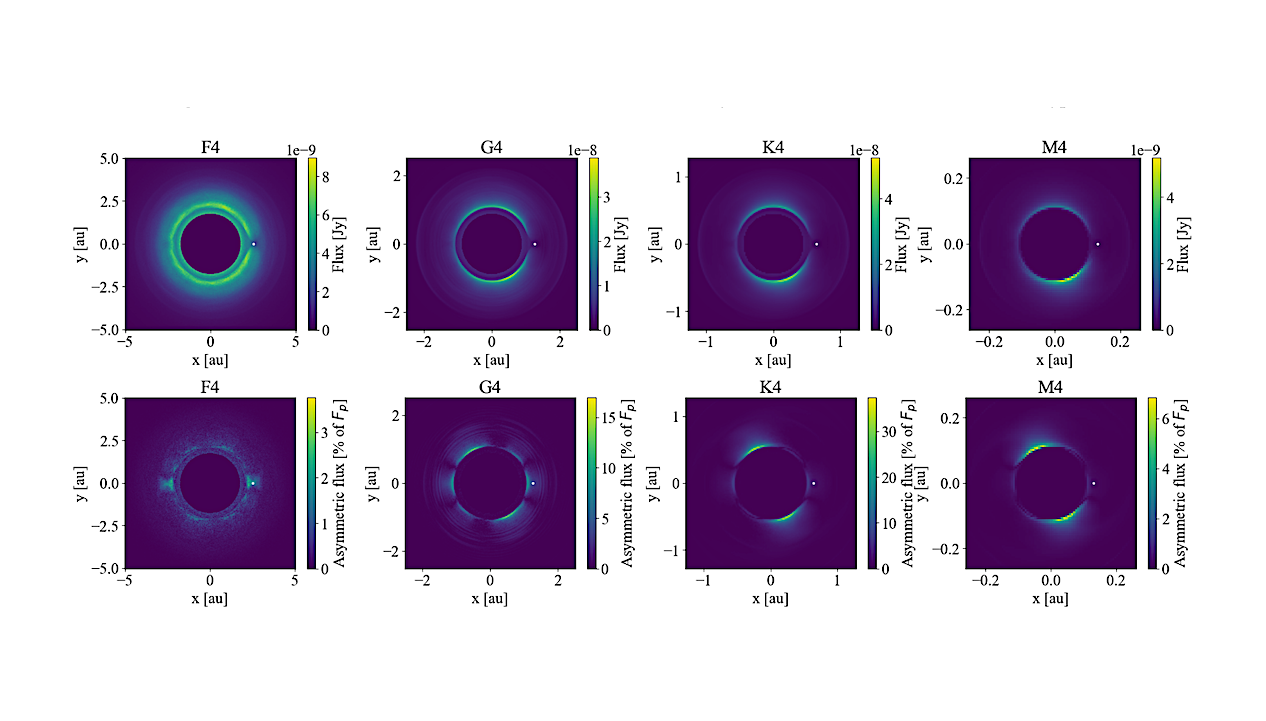

Flux with central regions masked (10 µm; upper row), and corresponding asymmetric flux relative to the planet flux Fp (lower row), following the format of Fig. 6. This masking emphasizes resonant structures, and all maps are shown within a spatial scale of ∼ 2 ap. Asymmetric flux panels follow the approach of Fig. 11 in Defrère et al. (2010).– astro-ph.EP
Earth-like exoplanets can create resonant structures in exozodiacal dust through mean motion resonances (MMRs).
These structures not only suggest the presence of such planets, but also act as potential noise sources in future mid-infrared (MIR) nulling interferometry observations. We aim to investigate how resonant structures in exozodiacal dust vary across stellar spectral types (F4–M4), and to evaluate how stellar wind drag affects their morphology and brightness in mature planetary systems.
We conducted numerical simulations of dust dynamics, extending earlier studies by including spectral type variation in stellar wind drag in addition to Poynting-Robertson (PR) drag. Our models represented systems of a few Gyr hosting an Earth-like exoplanet in the habitable zone (HZ).
We produced spatially resolved maps of optical depth and thermal emission for different stellar spectral types. Our simulations showed that resonant ring structures were formed for all stellar spectral types considered. In particular, we found that stellar wind drag played a critical role in shaping dust dynamics around old M-type stars, where it could dominate over PR drag by a factor of approximately 44.
This reduced the contrast of resonant rings relative to the background disk, compared to cases without spectral type variation in stellar wind. Across different spectral types, the optical depth contrast of the resonant ring increased for lower-mass stars, assuming a fixed background level.
Asymmetric thermal emission distributions were derived across all spectral types, which peaked for K-type stars. Our findings highlight the importance of incorporating both resonant dynamics and stellar wind effects when modeling exozodiacal dust around stars of different spectral types.
Seung-Yoo Lee, Masateru Ishiguro, Hangbin Jo, Sung-Chul Yoon
Comments: 22 pages, 17 figures. Submitted to A&A. Revised version after the first-round referee report
Subjects: Earth and Planetary Astrophysics (astro-ph.EP); Solar and Stellar Astrophysics (astro-ph.SR)
Cite as: arXiv:2511.17872 [astro-ph.EP] (or arXiv:2511.17872v1 [astro-ph.EP] for this version)
https://doi.org/10.48550/arXiv.2511.17872
Focus to learn more
Submission history
From: Masateru Ishiguro
[v1] Sat, 22 Nov 2025 01:59:10 UTC (1,889 KB)
https://arxiv.org/abs/2511.17872
Astrobiology
Stay Informed With the Latest & Most Important News
Previous Post
Next Post
-
 012024 in Review: Highlights from NASA in Silicon Valley
012024 in Review: Highlights from NASA in Silicon Valley -
 02Panasonic Leica Summilux DG 15mm f/1.7 ASPH review
02Panasonic Leica Summilux DG 15mm f/1.7 ASPH review -
 03How New NASA, India Earth Satellite NISAR Will See Earth
03How New NASA, India Earth Satellite NISAR Will See Earth -
 04And Thus Begins A New Year For Life On Earth
04And Thus Begins A New Year For Life On Earth -
 05Astronomy Activation Ambassadors: A New Era
05Astronomy Activation Ambassadors: A New Era -
06SpaceX launch surge helps set new global launch record in 2024
-
 07Space Force plans new ‘Futures Command’ amid pressure to speed up modernization
07Space Force plans new ‘Futures Command’ amid pressure to speed up modernization













